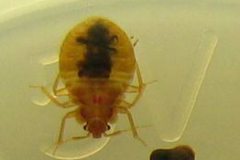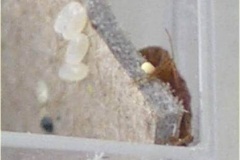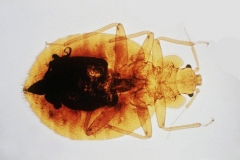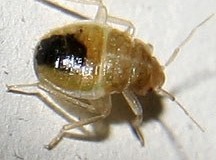BedBug Chasers theConnecticut Bed BugHeat Treatment SpecialistsWith our ONE and DONE its ONE Bed Bug Heat Treatment DONE in ONE Day with NO PREP to Get Rid of all Bed Bugs!
One of the Best Treatments for Bed Bugs in Connecticut. One & Done Bed Bug Treatment Services in Fairfield, CT serving Connecticut and Westchester County, New York.
Need to Solve bed bug problems in Connecticut with our One & Done Bed Bug Heat Treatment in CT. Looking for a permanent solution to Bed Bugs in Connecticut? OurOne & Done CT Bed Bug Heat Treatment Services in Connecticutis the most effective and least expensive method of treating your home for bed bugs in Connecticut!
Contact the Bed Bug Treatment Specialists inConnecticut servingGreenwich, Stamford, Norwalk, Fairfield, Danbury, Bethel and all of Connecticut. BedBug Chasers also services all of Westchester County and the surrounding areas such as Mount Kisco, New Castle, Mount Pleasant, North Salem, Lewisboro, Pound Ridge, White Plains and all their surrounding towns.
Looking for the#1 Bed Bug Dog Inspection Servicein CT and NY State? Youve heard of SAR (Search & Rescue), Bomb, Arson and Drug detection dogs. Now, mans best friend is also a weapon in the war against bed bugs. Bedbugs are very small and like to hide in tight, dark places. Unlike humans that must rely upon visible inspections, Bedbug dogs use their nose which means they can identify all stages of bed bugs (adults, nymphs and eggs) whether they are hiding in a mattress, behind a wall or under a carpet. All places you would not be able to see them with the human eye!
A BedBug Chasers Bed Bug K9 Inspection will determine not only whether you have bed bugs, but it will pinpoint where the bed bugs are hiding. If bed bugs are discovered, then the bed bug extermination can be performed only in the areas that need to be doneproducing fast results with less cost theBedBug Chasersway!
Unmarked and Confidential BedBug Chasers the #1 way to Kill Bed Bugs DEAD in CT
Unlike typical pest control professionals who rely on traditional marketing methods and cover the sides of their trucks with BED BUG PICTURES and words like BED BUG EXTERMINATOR or WE KILL BED BUGS, BedBug Chasers unique marketing model allows us to place your privacy first. Our team arrives in unmarked vehicles, and our equipment and uniforms display no logoswe dont even carry business cards! We are experts in discretionyour neighbors will never know why were there unless you want them too.
Having bed bug problems in Connecticut can be a nightmare, but dont let the nightmare last longer than one night! Bed bugs reproduce very rapidly, one pregnant female alone can turn into an infestation of over 13,000 in a mere 6 months! By the time you realize you need our bed bug removal service in Connecticut, your bed bug infestation is probably already a big one. There are many methods you can choose from to be your bed bug solution in Connecticut; however, you want to choose one that wont damage your home, is time efficient, and one that isnt incredibly costly. Thats when you need to call BedBug Chasers for our Bed Bug Heat Treatment in CT!
BedBug Chasers are the bed bug experts serving Connecticut and Westchester County, NY. We, at BedBug Chasers know that bed bugs can survive almost anything; even extreme temperatures and theyve even grown resistant to pesticides used to treat unwanted insects. The one thing they cannot survive is 122 Degrees Fahrenheit, so thats why we invented our one-of-a-kind heaters as our CT bed bug heat treatment. Our bed bug heaters leave behind no toxic residue unlike other methods, theyre safe and eco-friendly, and most importantly, as our bed bug heat treatment in CT, our heaters will fully rid your home of bed bugs in one day!
So, how do our bed bug heaters do it? Each one of our heaters produce 68,288 BTUs with an airflow at 3,000 CFM. They turn your home or business into a superheated oven, killing each bed bug, nymphs and eggs included, almost instantly. Connecticut Bed bug removal service doesnt have to be difficult, and thats what we at BedBug Chasers know. Our heaters came into play after 2 years of research and development, and today, our heaters are your best bet for safe, efficient, and 100% effective bed bug removal in CT!
[satellite gallery=1 auto=on caption=undefined thumbs=undefined]
When you call BedBug Chasers to solve your bed bug problems in Connecticut, you can be confident you made the right decision of available methods that kill bed bugs. BedBug Chasers heat treatment method is the best choice for your bed bug solution in CT because theres little preparation, no need to remove your clothes and personal belongings, your home will be treated in a single day, and at the end of the treatment, we at BedBug Chasers will provide you with a certified report showing what we encountered and the temperatures that were reached. The best part? Our treatment wont just be your bed bug solution in CT. Our bed bug heat treatment will also kill any other unwanted insects you may have in your home!
If youve discovered you have bed bug problems in CT or Westchester County NY, then you need to call Bed Bug Chasers for speedy, safe and efficient bed bug removal. Of course there are many methods out there that you may have already tried or were debating about trying, but unlike some other methods, Bed Bug Chasers CT Bed Bug Heat Treatment method wont cause mold, and doesnt require multiple treatments. One treatment means less costly as well! Remember, bed bugs reproduce rapidly, so once you discover you have bed bugs, its important to call Bed Bug Chasers to be your bed bug solution in CT!
Have us treat your home today and by tonight, your home will be bed bug free and you can return to a peaceful night sleep WE GUARANTEE IT!*
Fairfield New Haven Middlesex New London Windham Tolland Hartford Litchfield Westchester Rockland Putnam
*Call us now for details on our guarantee.
See more here:
BedBug Chasers of Connecticut - Bed Bug Heat Treatment

 Residence
Residence  Location
Location 










